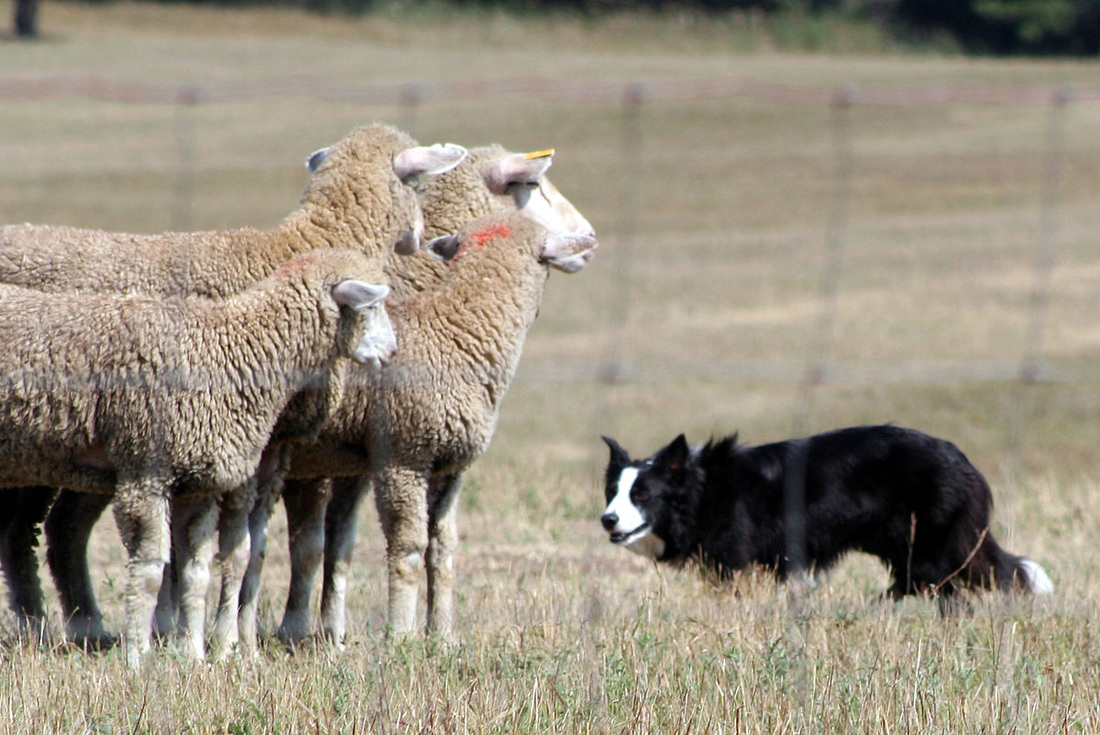|
1. When I'm the listener, I will listen carefully for intent and for content.
2. Before I begin to speak, I will understand my WHY, WHAT and HOW. 3. When I speak, I will strive to be clear, concise and compelling. These principles apply equally to written and oral communication, and at the enterprise level, in the professional sphere, and with your near and dear.
0 Comments
A Toad Day (and why you need one) Deep in the dark recesses of every professional practice is a dark and ugly secret-- a file you don’t want to deal with. You have one (or many) and so does the guy down the hall. I call this the Toad File. You know why. There are a hundred reasons why a file becomes a Toad File-- maybe it’s beyond your depth and you hate to admit it, maybe you just have no inspiration for it, maybe you don’t like the client, maybe you seriously under-quoted, maybe you’re afraid you missed a conflict or a critical limitation, maybe it has sat unattended so long you know it will take you a day to get back to speed...... Every Friday afternoon when you plan next week, you think about the Toad File. But by Monday more important, more interesting, more urgent, more profitable, less discouraging files push their way into line ahead of the Toad File, and then Friday rolls around again and your assistant asks about the Toad File. You mumble something about next week... You know the Toad File is going to bite you, inevitably and grievously. Which is why smart professionals hold a Toad Day once or twice a year, and they go like this: no appointments, no phone calls, no checking e-mail, no interruption. Wear your grubbies, order in pizza, reject any interruption. Put the Toad File on your desk at 0830 and don’t leave the office until you’ve conquered it. Now, when I say “conquered it”, I’m not fantasizing that you’ll finish it. Maybe you will, but not likely if you’re in law or architecture or the like, but what I do mean is that you will have solved what needs to be done, sketched out your work plan, and made some serious inroads toward client satisfaction. Your milestones are laid out, and now you own the project, it doesn’t own you. At this point you’re probably saying, “Norm, that’s great advice, but what does it have to do with being a successful communicator?” Good question, and the answer is that the successful communicator in any profession must have a clear and focused mind. Trust me-- one or two Toad Days a year will go a long way to keeping your professional mind clear and focused. So, have you scheduled a Toad Day? A Tribute to Ben
Ben Marcus was a lawyer in Ottawa for nearly fifty-nine years, a force of nature. He was quite deaf, or at least pretended to be when it was to his advantage. Extremely crusty because he could afford to be, he was frighteningly capable. He was also a man of impeccable ethics. My favourite memory of Ben was at a conference about two decades ago. There were perhaps three hundred of us in the room listening to a learned paper on some or other rule of evidence. It was probably important enough. Unfortunately, it was also the last presentation of a long day-- the suicide slot. As might be expected, the audience began to turn its attention to the hospitality suite. The paper could be read later. First one, then two, then ten slipped out. And then more. It was pretty clear that the room was clearing, and the speaker was clearly at a loss. And then Ben rose to his feet. Ben excused himself to the speaker then turned to the audience. “This young man,” he said, “has spent weeks preparing this paper for your benefit. It’s a good paper, and he is delivering it well. In leaving, you embarrass our profession. Please give him the honour of your attention.” And then Ben sat down as if nothing had happened. The room fell silent. Then applause broke out, and we all stayed. The paper was in fact a good paper, but it's Ben’s lesson that I have kept for a lifetime.  What Great Communicators (and Leaders) Can Learn from a Border Collie In sheepdog championships, only one or two dogs take home a trophy, but really there are no losers. Even if they take a little longer, every dog eventually gets the dang sheep in the pen. Like the marathoner who crawls on hands and knees over the finish line, long after the crowd has gone home, it is a point of honour for every dog and every handler to finish. But most of them do it pretty efficiently, and therein are lessons for you and me. You have to admit that convincing two or three hundred perfectly contented sheep to leave their blissful summer meadow to go some place unknown is a tough sell. If you were a sheep, you would not buy in. And yet the dog succeeds every time, with no damage to the sheep (except to their pride, and that heals quickly). The analogy to human communication is not perfect. Generally, our audiences are infinitely smarter and more willing. But there are definitely lessons to be learned from our black and white friends. Let’s examine what makes the Border Collie so successful. A Singular, Unwavering Purpose On a sheep drive the dog has only one thing in mind. He (or she) is utterly purposeful and nothing can distract the Border Collie from the task at hand. Nothing-- not nuclear war, not even squirrels. There is a pen, there are sheep. The sheep will end up in the pen. That’s it-- nothing else exists in the entire universe. It’s pretty powerful. A Clear Plan to Get from A to B Every feint, every rush, every circling-- each movement of the dog is a purposeful element of the Great Plan. The sheep are here, and they need to go there, each and every one. No movement is wasted, everything plays out artfully until the flock is moving as a great congregation marching to Zion. Working Within the Bigger Picture Every Border Collie has a human to help him out. The human, being taller and more versatile, has a better view of the flock and the terrain, and will give helpful signals to the dog. A sheepdog and his human who have learned to work together create a symphony of movement on the hillside, two souls working as one. It’s debatable who has the fuller picture of what’s going on, but it’s not debatable that the dog and the human share the same big picture. Adaptability The best laid plans of mice and men and sheepdogs “gang aft agley”, and the dog knows this. There will be ditches and posts and distracting bystanders and limpid pools of cool water and glorious patches of verdant fresh grass-- maybe even an errant coyote.... There are so many reasons why the plan could fall apart. The smart dog adapts, keeping the goal uppermost in his mind and in the mind of the flock, always ready to adjust with this or that tactic to bring the loose strands back into the greater thread. Energy and Enthusiasm There’s an old saying, “No sheep, no collie.” Many an old farmer will refuse to own a Border Collie unless the dog has a job. The Border Collie without work will find something to do, and you may not like it when you come home to find your hallway flooring peeled off in six inch shreds (true story). On the other hand, that is the beauty of the animal: their very success comes from an irrepressible passion to work, to persist and to succeed. Farm-based Border Collies often don’t die of old age, they usually wear out and drop in their tracks doing what they love-- running, thinking, analyzing, excelling-- working with (not for) their humans to meet and overcome the challenges of the day. So, let’s think about this approach to life. If you’re a sheep, what’s going to happen in the field? That’s right, the dog’s plan will become your plan. This works with people, too. Energy and enthusiasm are not only powerful sources of personal success, they are contagious. Properly injected into your presentations, energy and enthusiasm can turn any audience into a hungry and eager throng, ready to eat up everything you have to say. A word of warning, though-- this stuff can be like cocaine. A little taste of adoring audiences can get you hooked forever, and you may forget your ethical and professional obligations and become addicted to ovation. Always use your energy and enthusiasm for the good of your audience, not your personal gratification. A Willingness to Deal with Hard Cases An ornery old ram may decide to make resistance a matter of principle, or a ewe may discover that she can’t find her lamb. A flock can have three hundred developing personal crises, any one of which can explode into catastrophe. The dog is aware of these things long before the crisis stage-- watching the scowl on the face of the ram or hearing the frightened bleat of a lost lamb. He will quickly intervene to contain them before they disrupt public order. But when some personal crisis does disrupt the public order, the Border Collie deals with it. The technique, known as “gripping” consists of carefully applying the teeth to the leg of the offending animal with just enough firmness to remind the sheep that the ancestors of the owner of the teeth were wolves. It invariably works. Sometimes even a display of the teeth is sufficient. We all encounter the equivalent of the ornery ram or the panicked ewe, and all of a sudden our purposeful communication is off the rails. The true professional needs to have the personal strength and composure, as well as a bag of tricks, to deal with these situations as they arise. Warning: Don’t actually bite the disrupter, no matter how tempting. You won’t get invited back. Reputation Ah, reputation! Most sheepdog jokes centre on what sheep collectively think of the dog. The truth is, though, that when the dog is only a distant black and white speck, the sheep begin to respond. They know what’s about to play out. Smart dogs will often do a lap or two around the flock just to make sure everyone is “with the program”. Your reputation as a communicator needs to be a little more sophisticated than this, because your audience is significantly more sophisticated. But you get the point. Those communicators who develop a towering reputation as a person with an irresistible and crucial message find that half their work is done before they step on stage. He Doesn’t Bark a Lot If you’ve ever watched the sheepdog trials you’re immediately impressed that you hear shouts and whistles and plenty of bleating, but rarely do you hear a bark. Of course Border Collies can bark-- I have one, and I know! But when a sheepdog is at work, he uses his best stuff. Yelping and barking are counterproductive to his best stuff. We, as communicators, need to remember that. The Eye The Border Collie differs from most other dogs, including even most other collies, in that it uses its eye to control the flock. Most other dogs bark at the animals to drive them by brute force, generally effective, but crude. “Border Collie eye” is a powerful, piercing, unwavering stare, generally delivered from a wolf-like crouching posture. There is no randomness about the Border Collie eye-- it is laser-precise, deliberate, calculated, determined and effective. Not only sheep, but cattle, hogs, turkeys and even Canada geese respond in the same way-- they break their gaze and begin to sidle away out of that zone of discomfort. Granted, the Canada goose will hiss and make a fuss, but the Border Collie still wins. Now, if you used the Border Collie eye on your audience, it would seem creepy and you would not be invited back. You’d also look silly in the crouch position. Nevertheless, “the eye” is of critical importance to every effective public speaker. Let me explain. As humans, at least in our Western culture (and with some exceptions to prove the rule), eye contact is an essential part of our communication. We look at each other for signals of trustworthiness, empathy and comprehension. So, as a public speaker, there is nothing more critical than watching your audience for these visual cues as to your effectiveness and in offering back to the audience the reassurance that you are to be trusted and that you are empathetic. That’ll Do! Despite their deserved reputation as the primo athletes of the animal world, Border Collies are modest. Once the sheep are in the pen, the handler simply says, “That’ll do!” The dog trots off for a drink of water and a shady spot to wait for The Boss to finish up so they can all get in the truck and go home. Maybe there’s a trophy, and maybe there isn’t. To the dog, it was just another day’s work, with a bonus truck ride. I don’t know about you, but a characteristic I see again and again in truly great speakers, leaders, artists and craftspeople is that they are humble. Many don’t see anything special in what they do, they just think they’re lucky. And they are. Are you? Postscript: There’s a marvellous Border Collie story, which, while it tells us much about communication, just doesn’t quite fit with the foregoing. Still, I can’t resist tacking it on at the end, because it has its own little lesson. Some years ago, farmers in Wales had a brilliant idea. Being bilingual, they would raise some of their puppies in English, and some in Welsh. That way they could have some dogs follow one set of commands and others follow different commands, playing the whole thing like maestros and multiplying their field effectiveness without confusion. The plan worked amazingly well. That is, until the dogs became bilingual. You get the lesson! © 2016 Norman Bowley norm@purposeful.ca |
AuthorNorman Bowley teaches the Alignment Doctrine and the Client Code-- secrets to building the professional practice you and your clients deserve. Archives
September 2020
Categories |
-
Home
- Video >
-
Communication
>
- Elements >
-
Modules
>
-
Modules A-M
>
- Avoiding amateurism
- Change: Understanding It, Facing It, Profiting From It
- Communication for Long Term Relationship
- Communications Horror Stories
- Communications that blow up in your face
- Communicating toward success
- Earning the Right to Be Heard
- Gerunds, Mesolects and Other Arcane Terms of Art
- Having a Toad Day
- Healthy Fear
- Hippos and Raccoons-- Deadly Underestimation
- How I Moved From Doing What I Liked to Doing What I Loved
- How to Be on the Same Wavelength as Your Audience
- How to Pick Up a Porcupine-- Dealing With Difficult People
- Key of Trust
- Manipulation
- Mastering the Technologies
- Mining the Subconscious
-
Modules N-Z
>
- Quick and Dirty-- the 80/20 Rule
- Sabotaging Your Message
- Scar Tissue
- Secrets of the Druids
- Some Specific Approaches to Communications
- Specific audiences
- Symbolism-- the Heart of the Communicative Process
- Talking to Yourself and Why You Should Do It
- The Difference Between Leadership and Management
- The Eyes Eat First
- The Eyes Have It
- The Lizard Within-- What Your Reptilian Brain Makes You Do
- The Media of Communication
- The Respect Deficit
- The Secret of Authenticity
- Thinking About the Kinds of English
- Websites, Blogs and Newsletters
- When you don't have time to plan
- When You'd Rather Shoot Yourself
- Who's your audience? Targeted communication.
-
Modules A-M
>
- About us >
- Norman Bowley
- FREE
- Services
- Testimonials
- Blog
- FREE
Proudly powered by Weebly


 RSS Feed
RSS Feed